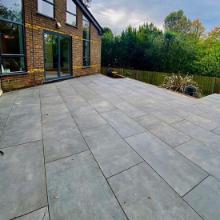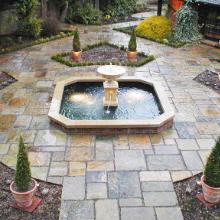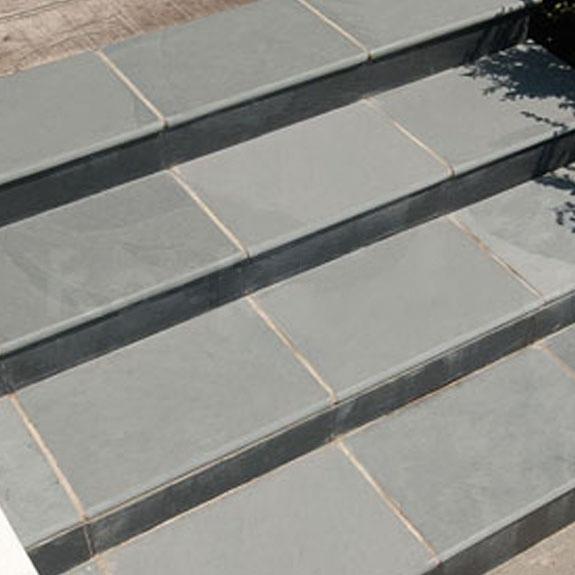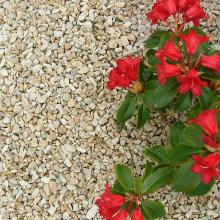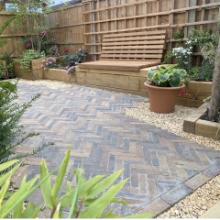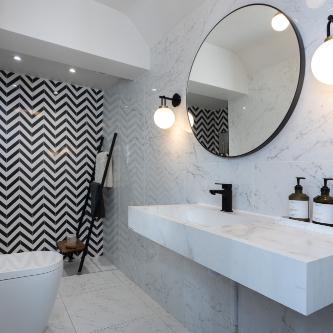Light defines how we perceive every surface. In architecture and landscaping, the same tile or slab can look dramatically different depending on time of day, viewing angle, and weather conditions.
Understanding how lighting interacts with porcelain and stone helps designers and homeowners make better choices for consistent, natural-looking results.
How We Perceive Surfaces
Human perception is conditioned by habit. We instinctively read horizontal and vertical surfaces differently. Floors, patios, and paving are interpreted as 'ground,' while walls and cladding are seen as 'background.' This distinction shapes how we notice texture, pattern, and tone. On a wall, light usually falls directly from above or in front, revealing fine detail and subtle variation. On a floor or paving area, light often glances across the surface, exaggerating reflection and flattening contrast.
Because of this, a tile sample viewed upright in a showroom will almost never look identical when installed horizontally outdoors. This is particularly true for pale colours and subtle patterns.
Angle of View and Colour Perception
Viewing angle has a powerful effect on how we see colour and brightness. When exterior paving is viewed from inside the house — often at a shallow, low angle — the surface typically appears lighter in tone than it does when seen directly from above. This is due to the way light scatters off the micro-texture of the surface and the limited range of reflected light reaching the viewer. As a person walks closer, the viewing angle steepens, the eye takes in more of the surface detail, and colours appear deeper and more saturated. The same patio that looks pale and reflective from the kitchen window can appear warm and richly coloured when standing outside. The effect is more noticeable on porcelain, which has a uniform microstructure and reflects light more evenly than stone. Natural stone, with its minute variations and organic inclusions, tends to break up the reflection, giving it more visual depth under changing angles.
The Role of Light Direction
The direction of light, particularly at night, can transform how paving and walling materials appear. Low-angle lighting — from bollards, wall lights, or step LEDs — highlights surface texture and grout joints while subduing colour. Shadows fall across every ridge and edge, emphasising texture but muting tonal contrast. This can be used deliberately to create atmosphere: a riven sandstone or a textured porcelain tile will appear dramatically tactile under grazing light. Conversely, smooth tiles may look flatter, their colour softening under the same illumination. Overhead or diffuse lighting, such as from moonlight, cloud cover, or wide-beam fixtures, reduces shadows and presents a more natural, balanced appearance.
How Wet Surfaces Behave
Water changes the way light interacts with material surfaces. It fills tiny pores and micro-textures, altering reflectivity and the apparent colour of the material. Porcelain is non-porous and has a vitrified surface. When wet, it becomes shinier, with slightly stronger reflections, but its colour generally remains unchanged. Natural stone, on the other hand, darkens noticeably when wet. The thin film of water enhances absorption and alters the refractive index, reducing scattered reflection.
This makes colours appear richer and patterns or fossils more distinct. Textures that seem subtle when dry can become strongly pronounced after rain.
Practical Implications for Design and Display
Because lighting and viewing angles so strongly influence perception, it’s important to evaluate materials in real conditions before making final choices. View samples flat on the ground, not upright. Assess them under both daylight and artificial lighting. If possible, check samples at different times of day, noting how the colour changes from morning to evening. When combining stone and porcelain, ensure the tones complement each other under mixed lighting. Lighting design should be considered part of the overall material selection. Position outdoor lights to enhance surface texture without creating harsh glare, and remember that night-time lighting will always shift emphasis from colour to texture.
The Takeaway
Lighting is as much a design material as porcelain or stone itself. During the day, shallow angles and bright reflection make exterior surfaces look paler and more uniform, especially when viewed from indoors. At night, low light emphasises joints and texture while suppressing colour. When wet, porcelain remains visually stable and reflective, whereas stone deepens, revealing the richness of its natural structure. Understanding these effects allows designers to predict how materials will behave in the real world — ensuring that a patio, pathway, or cladded wall looks just as intended in every light and season
